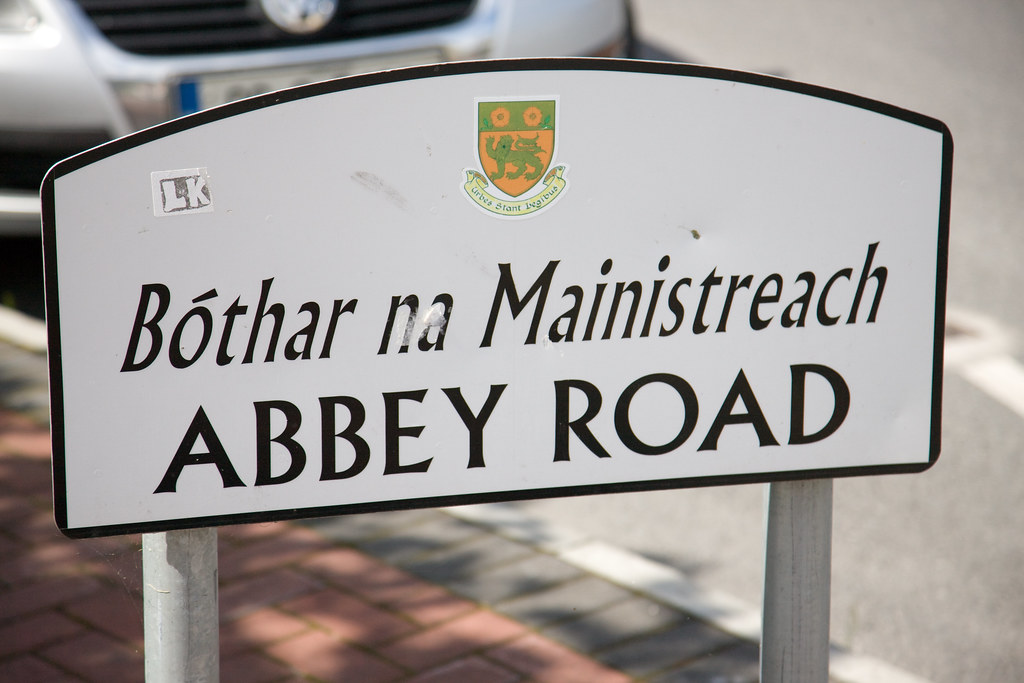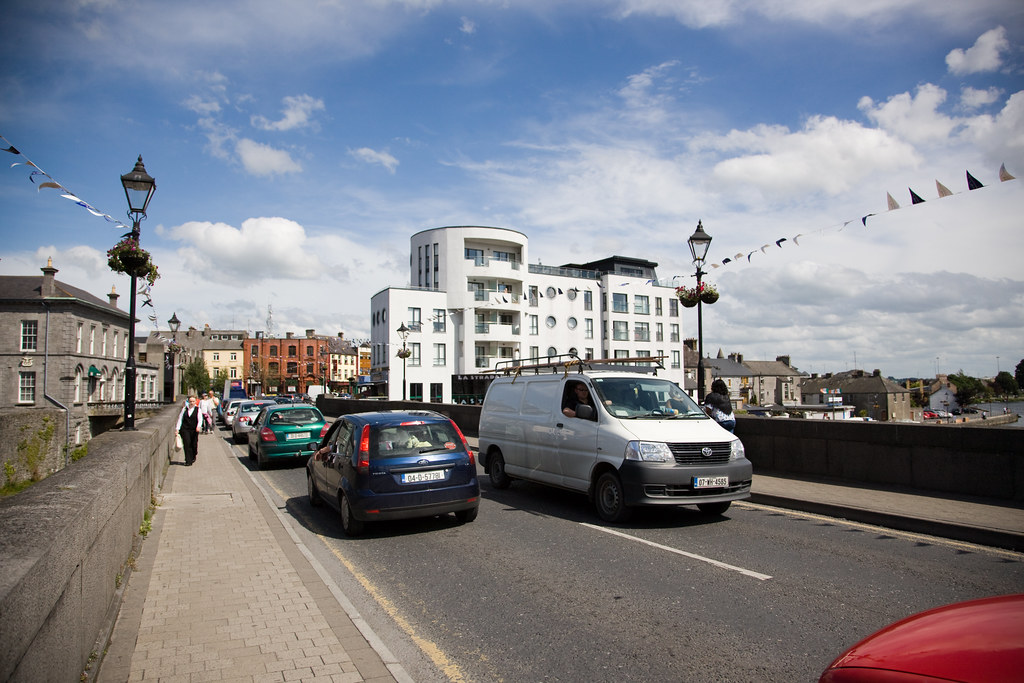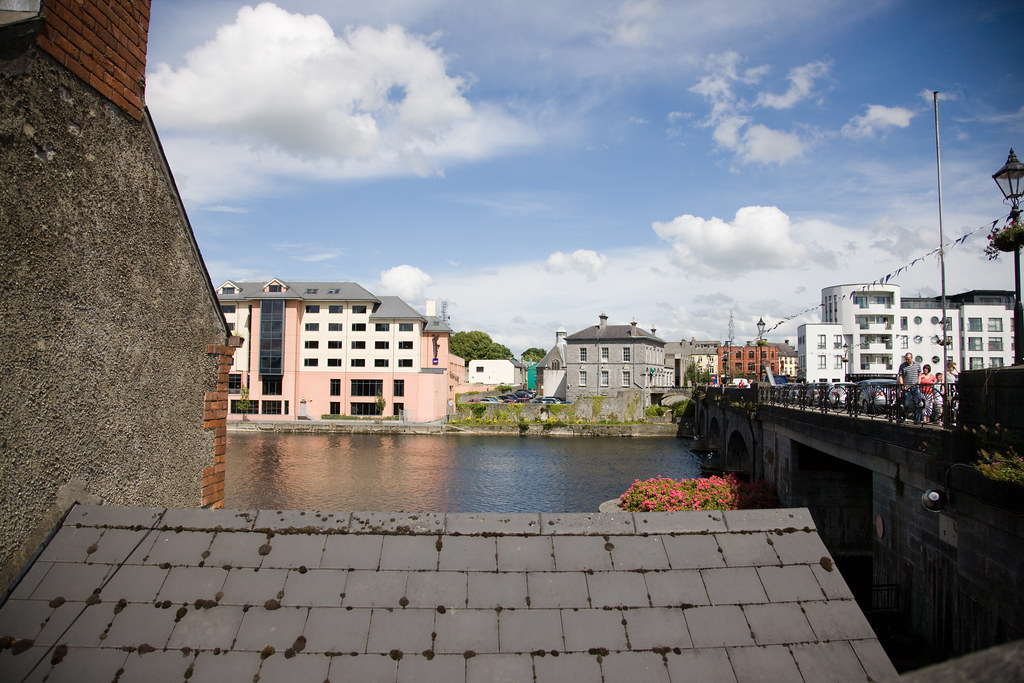
Custom Search
THE GREEN MENU OPTIONS ARE MOBILE FRIENDLY AND ARE FASTER SO THEY ARE RECOMMENDED. THE RED MENU OPTIONS ARE SOMEWHAT SLOWER DEPENDING ON YOUR DEVICE OR BROWSER AND ARE MORE SUITABLE FOR DESKTOPS AND LAPTOPS. THE BLUE OPTIONS ARE PAGE LINKS AND WILL BE PHASED OUT GOING FORWARD
ATHLONE
ALL THE PHOTOGRAPHS ARE HI-RES SO IT TAKES A WHILE TO LOAD THE SLIDESHOW - PLEASE WAIT
I last visited Athlone in 2008 however I hope to visit again early in 2016.
Athlone is a town on the River Shannon near the southern shore of Lough Ree in Ireland. It is the largest town in the Midlands Region. Most of the town lies on the east bank of the river; however, by the terms of the Local Government Act of 1898, six townlands on the west bank of the Shannon were deemed to be part of the town and, therefore, part of County Westmeath.
The 2011 Census of Ireland recorded the population of the town at 20,153, a 14.8% increase from 2006. Recent growth has also occurred outside the town's boundaries.
Athlone is near the geographical centre of Ireland, which is 8.85 kilometres (5.50 mi) north-northwest of the town, in the area of Carnagh East in County Roscommon.
Athlone is a town on the River Shannon near the southern shore of Lough Ree in Ireland. It is the largest town in the Midlands Region. Most of the town lies on the east bank of the river; however, by the terms of the Local Government Act of 1898, six townlands on the west bank of the Shannon were deemed to be part of the town and, therefore, part of County Westmeath.
The 2011 Census of Ireland recorded the population of the town at 20,153, a 14.8% increase from 2006. Recent growth has also occurred outside the town's boundaries.
Athlone is near the geographical centre of Ireland, which is 8.85 kilometres (5.50 mi) north-northwest of the town, in the area of Carnagh East in County Roscommon.
- SLIDESHOW 001 - PHOTOGRAPHS SUPPLIED BY WILLIAM MURPHY
- SLIDESHOW 002 - PHOTOGRAPHS SUPPLIED BY WILLIAM MURPHY
- SLIDESHOW 003 - PHOTOGRAPHS SUPPLIED BY WILLIAM MURPHY
- SLIDESHOW 004 - PHOTOGRAPHS SUPPLIED BY WILLIAM MURPHY
- SLIDESHOW 005 - PHOTOGRAPHS SUPPLIED BY WILLIAM MURPHY
The part of the town that lies east of the Shannon is in the province of Leinster, the county of Westmeath, the barony of Brawny, and the civil parish of St Mary's. Unusually, the barony is coterminous with a single civil parish. In terms of ecclesiastical boundaries, the eastern past of the town is in the Roman Catholic Diocese of Ardagh and Clonmacnoise and the parish of St Mary's.
However, seven townlands, or sections of the town, lie west of the Shannon: Athlone and Big Meadow, Bellaugh, Bogganfin, Canal and Banks, Doovoge, part of Monksland, and Ranelagh. Although surrounded by County Roscommon in the province of Connacht, they are designated as part of County Westmeath to preserve the integrity of the town. These townlands lie in St Peter's civil parish in the barony of Athlone South. In terms of ecclesiastical boundaries, the townlands west of the Shannon are part of the Roman Catholic Diocese of Elphin and the parish of Ss Peter and Paul.
Athlone is a popular stop for pleasure craft along the River Shannon. Lough Ree, the largest lake on the Shannon, is a short distance upstream from Athlone, and many boat companies are based out of the town. For craft to pass through Athlone, it is necessary to use a lock in the river, which beside the weir and downstream of the current road bridge. The lock, weir, and bridge were all constructed by the Shannon navigation commissioners in the 1840s. Before then, boats used a canal, about a mile and a half long, to the west of the river. The canal was built by Thomas Omer for the Commissioners of Inland Navigation. Work started in 1757 and involved the work of over 300 men. Omer built a single lock, 120′ X 19′ with a rise of 4.5′, but there was also a guard lock, further upstream, with a single set of gates to protect the canal against floods. There were also two lay-bys, or harbours, one above the lock and another at the upstream end. The old canal is no longer navigable.
Athlone railway station opened on 3 October 1859, with Irish Rail services travelling eastwards to Portarlington, Kildare and Dublin Heuston and westwards to the Westport/Ballina lines as well as to Athenry, Oranmore, and Galway.
Connections from Athlone via a train transfer at the Athenry station extend to Ennis and Limerick, while a transfer at Portarlington connects Limerick Junction and Limerick. There are trains from Portarlington to Mallow, and from Mallow to Cork, Killarney, Farranfore, and Tralee. Travel between Athlone and Killdare enables connections to Carlow, Kilkenny, and Waterford.



